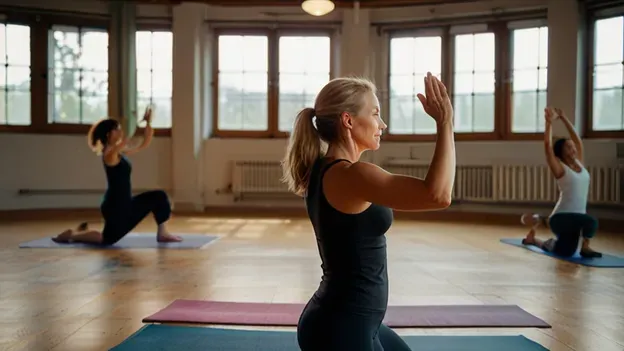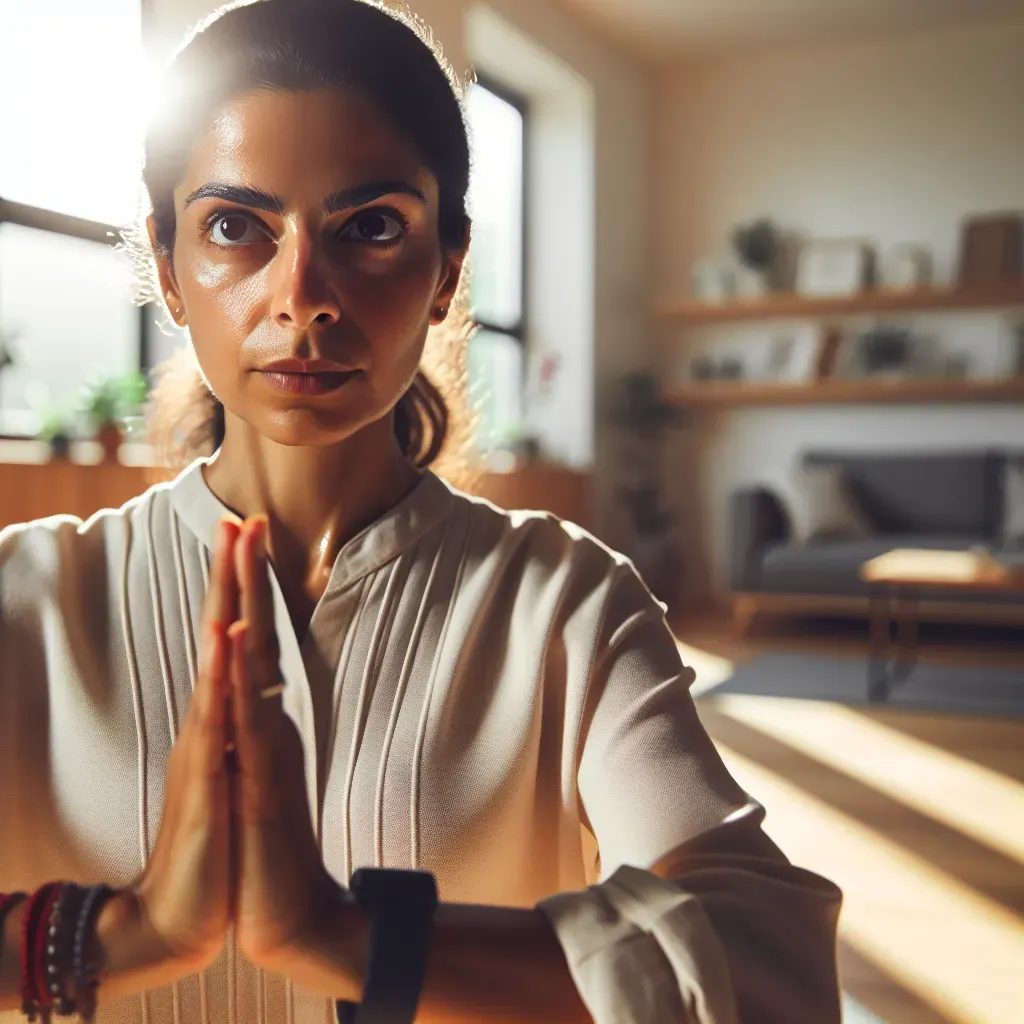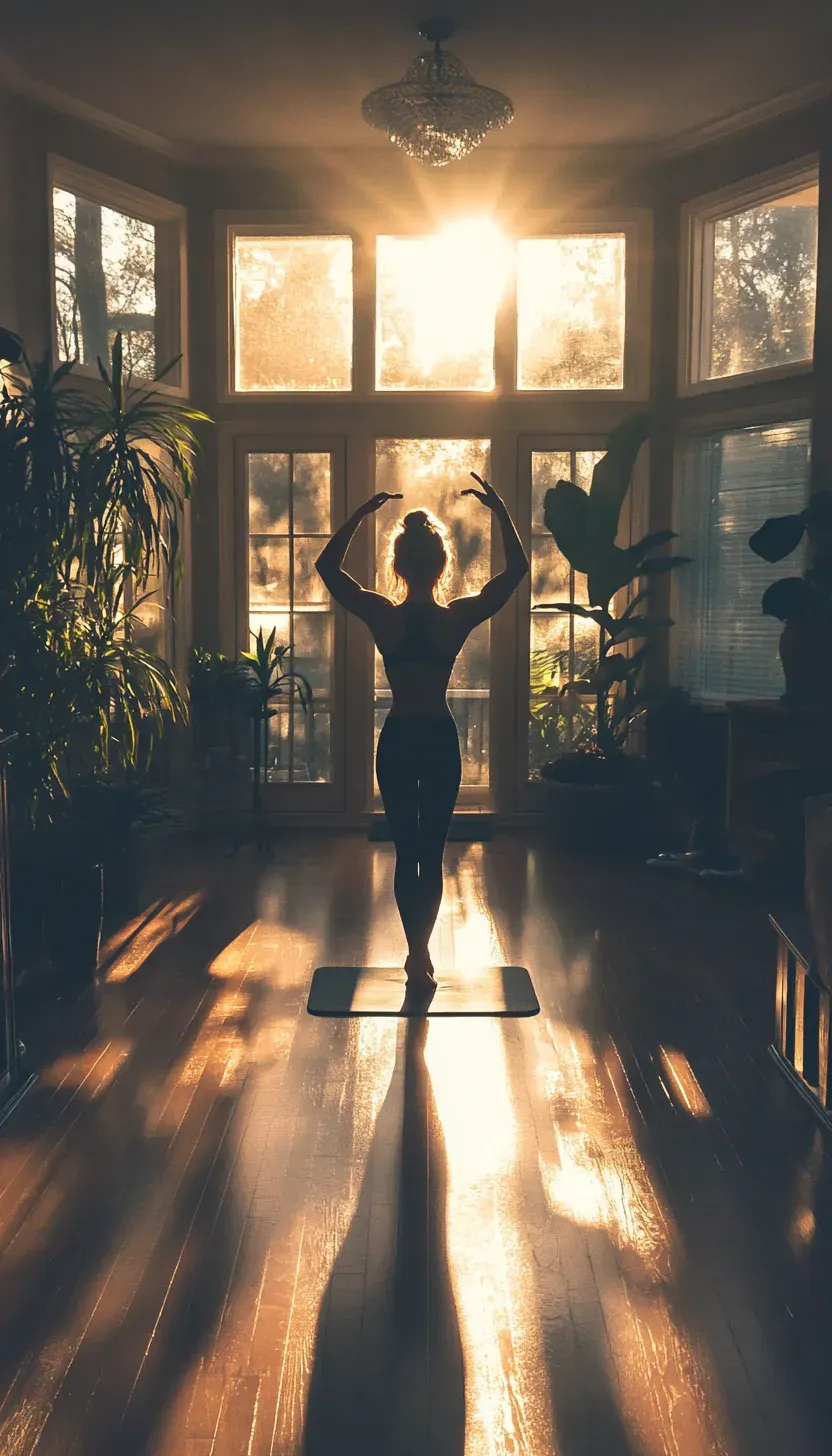Transform Your Practice: 5 Ways Dynamic Sequencing Works
Table Of Contents
- What is Dynamic Sequencing?
- Enhanced Caloric Burn
- Improved Muscle Engagement
- Structuring Your Class for Optimal Results
- Mindfulness and Flow State
- Common Mistakes to Avoid
- Incorporating Dynamic Sequencing Into Your Routine
- Success Stories: Transformational Journeys
- Embrace the Power of Dynamic Sequencing

In the ever-evolving landscape of yoga, dynamic sequencing emerges as a transformative approach that empowers practitioners to unlock their full potential.
Unlike traditional yoga methods, which often emphasize static postures held for extended periods, dynamic sequencing invites movement into the practice, fostering flow and engagement in each sequence.
This lively and fluid style does more than elevate your heart rate; it cultivates a deeper connection between mind and body, allowing you to experience your workout not just as a physical endeavour but as a source of vitality and inspiration.
Imagine stepping onto your mat to ignite your passion for fitness not merely going through the motions but embracing each transition as an opportunity for growth. With dynamic sequencing, every inhale and exhale becomes a part of a seamless choreography, enhancing strength while building flexibility and balance.
It challenges long-held beliefs about what yoga can be; this method is not just about finding stillness or achieving perfect poses it’s about honouring your journey toward well-being.
If you've ever wished to elevate your practice or breathe new life into your routine, prepare yourself to discover five compelling ways dynamic sequencing can reshape your approach to fitness and wellness. Join us as we delve into this inspiring method that promises to transform how you practice yoga and connect with yourself on multiple levels.
What is Dynamic Sequencing?
Dynamic sequencing is an innovative approach to yoga that emphasizes fluid, continuous movement through a series of poses. Unlike traditional static sequences, where practitioners hold postures for extended periods, dynamic sequencing encourages transitions between movements with an increased focus on rhythm and vitality.
This method invigorates both the body and mind and helps enhance flexibility and strength. Essentially, dynamic sequencing transforms each practice into a dance-like experience that invites mindful engagement while building stamina.
One key difference between dynamic sequences and static holds lies in the type of muscle activation they promote. In static yoga, you might hold a Warrior II pose for several breaths, focusing on stability and alignment.
While this is immensely beneficial for building muscle endurance, it often limits the full range of motion needed for holistic development. Conversely, dynamic sequencing allows you to flow seamlessly from one posture to another like transitioning from Downward Dog into Plank engaging various muscle groups in quick succession instead of just concentrating on one at a time.
This multifaceted engagement challenges the body in new ways, yielding even greater benefits as practitioners explore their physical capacities through varied motions.
To truly grasp the essence of dynamic sequencing, consider how it aligns with functional fitness principles found in various forms of exercise training. For instance, athletes frequently engage in drills that require quick pivots or directional changes demands also addressed through dynamic sequences in yoga practice.
This translates to real-world applications; by enhancing your body's ability to move efficiently through interconnected movements, you cultivate resilience against injuries while increasing overall functionality both on and off the mat.
Dynamic sequencing invigorates workouts by bringing an element of playfulness into your routine a powerful antidote to monotonous practices that may hinder growth or motivation.
Embracing this vibrant style opens pathways to heightened awareness and self-exploration as you immerse yourself fully into each flowing transition.
Get ready to redefine not just your physical strengths but also expand your understanding of what yoga can offer and let movement become more than just a task; allow it to evolve into an authentic expression of who you are!
Enhanced Caloric Burn
Dynamic sequencing is more than just a flow of poses; it’s a vigorous dance that elevates your heart rate and enhances caloric burn in ways static sequences simply cannot. As you transition between dynamic movements, your body constantly engages different muscle groups and stabilizes itself in new positions.
This constant engagement creates an aerobic rhythm, which is crucial for burning calories. When you’re moving fluidly from one pose to another like flowing from Downward Dog into Warrior II the intensity skyrockets, demanding deeper breaths and increased cardiovascular effort.
It’s this increased heart rate that accelerates your metabolism, leading to greater energy expenditure.
Numerous studies corroborate the effectiveness of dynamic movements on caloric burn. Research published in the Journal of Sports Science & Medicine revealed that yoga practitioners who engaged in continuous movement burned up to 30% more calories compared to those practising traditional static holds.
The evidence indicates that not only do individuals performing dynamic sequences experience enhanced caloric expenditure during their sessions, but they may also continue to enjoy the afterburn effect post-workout a phenomenon known as excess post-exercise oxygen consumption (EPOC) where the body continues to use energy at an elevated rate long after exercise has ceased.
Consider this: if you've ever felt invigorated yet fatigued after a lively yoga session filled with sun salutations or playful transitions like jumping through to seated poses, you're experiencing this unique metabolic boost firsthand. It's not just about how many calories you burn during practice; it's about reaping the
enefits beyond the mat too! Embracing dynamic sequencing can effectively transform your workout regimen into an engaging activity that propels you toward your fitness goals while keeping monotony at bay.
So why continue down the path of traditional methods when an energizing alternative awaits? By implementing dynamic sequencing into your practice, you will not only enhance your overall strength and flexibility but also ignite a calorie-torching workout experience tailored for transformative results. Let go of old beliefs about static routines and embrace this powerful approach your body will thank you!
Improved Muscle Engagement
Dynamic sequencing is not just about moving through poses; it's an artful practice of engaging your muscles in a way that maximizes their potential. By varying the sequences and the tempo, practitioners can activate different muscle groups that may otherwise go unnoticed in traditional static sequences.
For example, when transitioning from Warrior II to Reverse Warrior with a flowing motion, not only do you strengthen your legs and core, but you also engage your upper body and improve coordination. This holistic approach leads to greater overall muscle engagement and strength enhancement.
Consider the inspiring story of Sarah, a dedicated yoga practitioner who found herself plateauing in her fitness journey. After incorporating dynamic sequencing into her practice, she felt immediate changes.
“I didn’t realize how much I was missing until I started challenging my body through movement,” she shared. Sarah noticed improvements in her arm strength as she moved fluidly between poses like Chaturanga and Upward Dog a sequence that activates everything from her shoulders to her core allowing her to build stability and power simultaneously.
Another transformational journey comes from Jessica, who initially struggled with lower back pain due to muscle imbalances. Upon shifting to dynamic sequencing methods, she learned how to properly engage her glutes and hamstrings during movements like Bridge Pose followed quickly by a flow into Downward Facing Dog.
“It’s remarkable how focusing on these transitions has strengthened my back while relieving my previous discomfort,” she expressed confidently. Jessica's testimonial is a testament to how this method not only improves muscle engagement but also enhances functional performance in everyday activities.
Incorporating varying poses enhances responsiveness within your routine; as you adapt and challenge your bodies in unique ways, each session creates growth opportunities.
The potential for transformation becomes limitless when you think beyond traditional rigidity. Dynamic sequencing encourages exploration of your physical capabilities while promoting synergy among diverse muscle groups a doorway not just toward improved aesthetics but fostering genuine strength from within, allowing every participant to unlock their true potential.
Structuring Your Class For Optimal Results
Designing a yoga class that effectively incorporates dynamic sequencing requires thoughtful planning and an understanding of the energy flow throughout the session. Start by envisioning a progression that gradually increases in intensity this keeps participants engaged while allowing their bodies to adapt.
Begin your class with grounding poses like Child's Pose or Downward Facing Dog, which helps centre the mind and body, setting the tone for movement as they transition into more dynamic sequences. Including breathwork at the start can also enhance focus and readiness for what's to come.
Next, consider creating a seamless flow that incorporates both strength-building and flexibility-enhancing postures. For example, transitioning from High Lunge into Warrior II not only boosts engagement but also reinforces muscle memory as students learn to connect these poses with their breath.
Add creative pauses within transitions; this allows practitioners to feel each movement fully while providing moments of stability amidst the dynamism.
A sample sequence could involve sun salutations interspersed with balance challenges like Tree Pose or Warrior III, culminating in invigorating heart-opening positions such as Camel Pose.
It’s crucial to keep variations accessible for all levels offering modifications ensures inclusivity and maximizes participation. As you teach, encourage feedback on what resonates with participants so you can refine your future classes based on their experiences.
Providing time for cooling down after challenging sections allows the body to recover while integrating newfound strength a quintessential aspect when aiming for optimal results.
Lastly, make use of music that complements Mirroring Flow; soft upbeat tracks may elevate energy during movements while slower rhythms set a calming backdrop during recovery phases.
By weaving together mindful transitions and relatable music, you create an environment where students not only practice movement but embody it fully transforming regular yoga sessions into profound experiences of physicality and presence.
So invite your students to explore this dynamic approach you just might spark passion ignited through motion!
Mindfulness And Flow State
Dynamic sequencing goes beyond mere physical movement; it facilitates a profound state of mindfulness that transforms your yoga practice into a meditative experience. As practitioners flow through various postures with intention, there’s an opportunity to cultivate awareness of the body and breath.
This heightened consciousness allows individuals to tune into their movements, creating synergy between mind, body, and spirit.
For instance, imagine transitioning from Warrior II into reverse warrior without hesitation the fluidity not only challenges your muscles but also invites mental clarity. You become fully immersed in the rhythm of your practice, fostering a deep sense of presence.
Achieving a flow state during dynamic sequencing can significantly enhance overall wellness and mental health. When you are engaged in this mindful movement, stress dissipates, and feelings of joy emerge as you're absorbed in the moment.
The repetitive nature of sequences can be likened to a mantra; as you breathe deeply through each transition, worries fade away like leaves swept by an autumn breeze.
Research has shown that engaging in activities which induce flow can lead to better emotional regulation and reduced symptoms of anxiety or depression. Thus, dynamic sequencing is not just about breaking a sweat it's about nurturing emotional resilience.
Moreover, many yogis recount transformative experiences when they reach this flow state: Sarah found herself smiling uncontrollably during her practice as she seamlessly moved through poses without force each transition bringing feelings of liberation and peace.
Alex realized that his frustrations from daily life were momentarily silenced as he entered this rhythmic dance on the mat. These personal stories reflect widespread benefits; they signify that achieving mindfulness through dynamic sequencing enhances well-being while fostering empowerment within oneself.
Ultimately, incorporating dynamic sequencing into your yoga routine doesn’t just improve fitness levels but enriches the entirety of one's existence. It allows for moments where distractions vanish, letting individuals connect with their inner selves more profoundly than ever before.
So why wait? Dive deeper into your practice today; discover how embracing movement can rejuvenate both body and mind while cultivating lifelong habits toward wellness!
Common Mistakes To Avoid
As you embark on your journey with dynamic sequencing, it’s important to recognize that even the most seasoned practitioners can make common missteps. One frequent error is rushing through transitions between poses.
The excitement of exploring new movements can lead to overlooking the essential element of flow. When practitioners hurry, they often sacrifice alignment and breath, making their practice less effective and potentially risking injury.
Instead, take a moment to pause between movements; allow each pose to settle before transitioning into the next. This not only enhances mindfulness but also fosters a deeper connection with your body.
Another pitfall many encounter is neglecting proper warm-up routines. Dynamic sequencing inherently involves more vigorous and flowing movements than traditional static poses may demand; thus, skipping an adequate warm-up sets the stage for strain or discomfort.
Ensure that you dedicate at least five to ten minutes at the beginning of your practice to gradually engage your muscles and increase your heart rate. Incorporating gentle stretches or mild dynamic movements allows for a smoother transition into more vigorous sequences while safeguarding your body against injury.
Additionally, some practitioners tend to limit themselves by sticking strictly to familiar sequences, inhibiting growth. Relying too heavily on repetitive patterns can diminish the very essence of dynamic movement exploration and variety.
To counteract this tendency, challenge yourself to incorporate new poses periodically or explore variations of familiar ones.
Embrace creativity within your practice! Start with small shifts perhaps adding a twist or combining two different poses and watch how your body responds over time; it could lead not just to enhanced flexibility but also newfound strength.
Finally, there’s often hesitation among newcomers (or even veterans) about listening to their body cues during dynamic sequencing sessions.
To replicate what others are doing or keep pace within classes, individuals may push beyond comfortable boundaries which can lead them into suboptimal zones for growth or worse injury.
Make it a priority during every session to tune in deeply: check in with how you feel physically and emotionally as you flow through each movement. By respecting your body’s signals such as fatigue or discomfort, you'll cultivate a healthier practice that truly resonates with both physical capabilities and personal well-being.
Incorporating Dynamic Sequencing Into Your Routine
As you embark on your journey with dynamic sequencing, consider how to seamlessly weave these invigorating sequences into your regular fitness regime or yoga classes. Start by dedicating one or two sessions per week to focus specifically on dynamic movements.
Begin each session with a warm-up that combines gentle static poses followed by increasing mobility and controlled movement patterns. As you become comfortable, expand these dedicated days to include various styles such as vinyasa flow or power yoga that emphasize fluid transitions between postures.
This approach allows for gradual integration while giving your body time to adapt, ensuring that each practice is both challenging and rewarding.
Tracking your progress as you implement dynamic sequencing is crucial for maintaining motivation and monitoring improvement in strength and stamina. Investing in a simple fitness journal can work wonders; note the sequences you've practised, duration, heart rate, and how you felt during each session.
Over time, reflect on these notes to identify patterns in your progress and areas needing more focus. Additionally, utilizing mobile apps designed for fitness tracking can provide insights through data visualization illustrating improvements in caloric burn or muscle engagement over weeks or months.
Adaptability will be key in helping your practice evolve as well. Once you're comfortable with core dynamic sequences, challenge yourself by introducing variations or progressively increasing the complexity of poses. For example, if you've mastered downward dog to high plank transitions, add an element of surprise like knee-to-elbow movements midway through those changes.
Encouraging this playful adaptation not only keeps things exciting but also fosters personal growth and resilience as a practitioner helping defeat stagnation.
Lastly, don’t forget the immense value of community support when incorporating dynamic sequencing into your routine! Joining group classes or online forums where dynamic sequencing techniques are shared can enhance learning experiences while fostering camaraderie among fellow practitioners.
Engage with like-minded individuals who share similar goals; this can inspire creativity in designing new sequences while offering encouragement down the road on difficult days.
Through mindful integration of these recommendations into your practices and leveraging community you’ll find yourself not just transforming physically but cultivating deeper connections within yourself and others around you.
Success Stories: Transformational Journeys
Dynamic sequencing isn't just a method; it’s a catalyst for transformation, evident in the remarkable stories of women who have embraced its power. Take Sarah, a 35-year-old mother of two. After years of juggling family life and work responsibilities, she found her fitness routine stagnant and uninspiring.
Upon integrating dynamic sequencing into her practice, Sarah not only reignited her passion for yoga but also discovered newfound strength physically and mentally.
In just three months, she went from feeling exhausted after a brief workout to confidently flowing through challenging sequences that left her invigorated rather than drained. Her journey is a testament to how dynamic movements can unlock dormant energy and vitality.
Then there's Rebecca, a personal trainer who struggled with body image issues despite being dedicated to fitness. Dynamic sequencing became her game-changer when she realized it allowed her to engage multiple muscle groups effectively while keeping her heart rate elevated.
Through consistent practice, Rebecca witnessed an impressive transformation not just in her physique but also in her perspective on health as an ever-evolving journey.
Now, instead of focusing solely on aesthetics, she emphasizes resilience and strength in both herself and her clients, proving that the benefits extend beyond physical attributes.
Moreover, let’s meet Chloe, who initially hesitated to join a dynamic class due to fears about keeping pace with more experienced practitioners. However, upon leaping, she discovered that the supportive environment fostered by group classes transformed not only her physical capabilities but also bolstered her confidence tremendously.
With each session embracing creative transitions between poses, Chloe learned to listen to her body’s cues an essential skill that has enhanced every aspect of her life outside of the studio as well.
These narratives highlight more than individual transformations; they exemplify the overarching theme of empowerment through movement. The collective experiences encapsulate the essence of what dynamic sequencing can achieve: breaking barriers around self-doubt and inspiring continuous growth through mindful practice.
As you consider embarking on your journey with dynamic sequencing, let these stories serve as motivation they remind us all that true change often starts with embracing new challenges head-on and believing in our limitless potential.
Embrace The Power Of Dynamic Sequencing
As we've explored throughout this article, dynamic sequencing offers immense benefits that can truly transform your yoga practice. From enhanced caloric burn to improved muscle engagement, each advantage contributes to a more effective and fulfilling fitness journey.
The incorporation of mindfulness and flow states not only deepens your connection to the practice but also elevates your mental well-being. Moreover, learning to structure your classes effectively can lead to incredible results evident in the inspiring success stories we shared from fellow practitioners.
These testimonials serve as a testament to how embracing change can spark profound growth.
Now is the time to take proactive steps towards redefining your routine! Say goodbye to static methods that may have held you back and welcome the dynamic movements that invigorate your body and soul.
Whether you're a seasoned instructor or simply looking for personal development, allow curiosity to guide you. Experiment with various sequences, track your progress and embrace each transformative moment on this exciting path forward.
Remember every small change leads to significant improvement; so let go of reluctance and leap into a world filled with potential through dynamic sequencing! Your most empowered self awaits.
For a deeper dive into sequencing. Check out Unlock Your Mind And Body With Dynamic Sequencing
People Also Asked
1. What is dynamic sequencing in yoga?
Dynamic sequencing is a yoga approach focusing on continuous, fluid movements through poses, enhancing flexibility and strength.
2. How does dynamic sequencing improve caloric burn?
By maintaining a high heart rate through constant movement, dynamic sequencing increases caloric expenditure during and after the workout.
3. What are the key benefits of dynamic sequencing?
Benefits include improved muscle engagement, increased caloric burn, enhanced flexibility, and a deeper mindfulness practice.
4. Can dynamic sequencing help with muscle engagement?
Yes, it engages multiple muscle groups more thoroughly compared to static poses, improving overall strength and coordination.
5. How should I structure a yoga class using dynamic sequencing?
Start with grounding poses, progressively increase intensity, and incorporate creative transitions with breathwork to maintain flow.
6. What common mistakes should be avoided with dynamic sequencing?
Avoid rushing transitions, skipping warm-ups, sticking to familiar sequences, and ignoring body cues.
7. How often should I practice dynamic sequencing?
Aim to include dynamic sequencing in your routine once or twice a week to gradually build strength and flexibility.
8. Does dynamic sequencing aid in mindfulness?
Yes, the continuous flow of movement fosters mindfulness by enhancing body awareness and mental clarity.
9. What are some examples of dynamic sequencing poses?
Examples include transitioning from Downward Dog to Warrior II or integrating sun salutations with balance poses.
10. How can I track progress with dynamic sequencing?
Use a fitness journal or app to monitor sequences, duration, and physical responses to track improvements over time.





